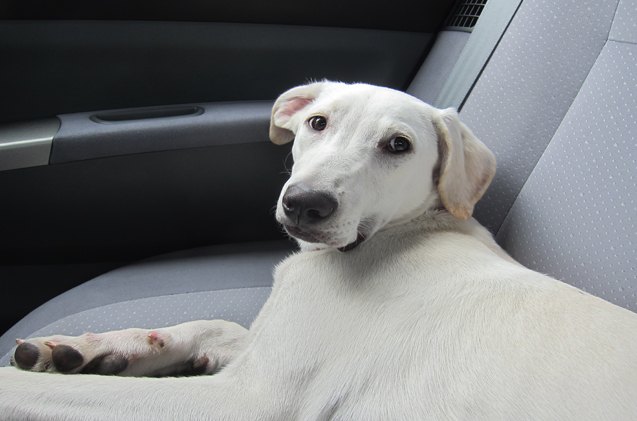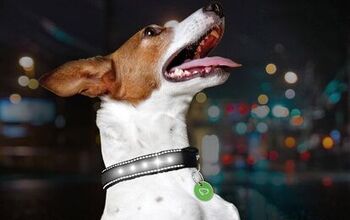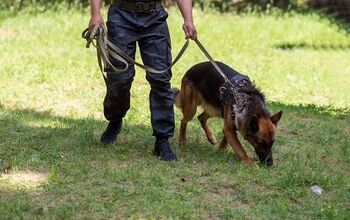Stay Safe During National Pet Travel Safety Day

The height of holiday travel has passed – airlines carried over 45 million passengers this season, and even more took to the roads at least 50 miles from home since December 16, 2016.
As pets are part of the family, many traveled with their families, and will continue to do so through this new year. January 2 is National Pet Travel Safety Day, and we want to share with you some tips for keeping your pet safe however and whenever he travels with you.
- Traveling with your pet can be extremely stressful, as you are not only worried about yourself and your belongings, but your pets as well. Our pets are tuned into us, and are aware of our emotions, so be sure that when traveling, assure your pet that he’s safe and you’re in control. This will go a long way for his comfort level as you travel.
Related: Study Finds Most Pet Travel Seats Not Effective During Car Crashes
- The most important thing that you can do when traveling with your pet is to ensure he is identified properly. ALWAYS make sure your pet has a collar and tag that has your name, phone number and secondary contact number. It’s a wise idea to be sure well beforehand that your pet is microchipped (always a good safety measure). Always be sure to take a couple of current pictures right before you head out just in case the worst happens and you are separated.
- If you are traveling by car, remember that it’s not as easy as just popping your pooch in the car and hitting the road. An important part of every road trip is a carrier or crate. Your dog may not use a crate any other time, but in the car, even an abrupt stop at just 10 m.p.h can do significant damage to your dog or cat should he be thrown in the halt. Be sure the crate is big enough for your pet to turn, sit and lie in, and that the crate is secure and won’t slide as you accelerate/decelerate. If you don’t use a crate, do not let your pet ride with his head outside. One piece of debris in his eye and you could have some serious problems on vacation–and nobody wants that!
- No matter the length of your trip, prepare as if it is a longer trip. In case there is some unforeseen circumstance that keeps the trip going longer, you’ll be glad you prepared with extra food and water. Even if you don’t travel across state lines, it’s a good idea to bring a copy of your pet’s shot records just in case you need to take an out-of-town trip to the vet.
- Just as you might for your human family members, bring a travel-kit for your pet. Be sure to include the essentials of food and water, bowls and leash, but also bring waste bags and scooper for potty breaks on the road, as well as any medication, first-aid kits or grooming supplies your pet may need while gone. Sometimes dogs and cats may get car sick, so bring a few extra towels and wet wipe containers just in case, and don’t let your pet eat a big meal a few hours before you travel.
- Find rest areas where you are able to take your pet. It’s never a good idea to leave your animal alone in a parked car, warm or cold, and again, you don’t want anything bad to happen on your trip.
- If you are traveling by air, hopefully your pet is small enough to fit under the seat in a secure carrier with you. Otherwise, it’s not advised to travel by air with your pets as their accommodations not something your pet would be used to. If you have no choice but to travel by air with your pet, though, we suggest that you contact your vet beforehand to be sure that your pet is up to date on all shots and to get a health certificate from your vet. Most airlines require this to be dated no more than 10 days before departure, and helps make sure that your pet is up to the challenge of air travel. Though it might be tempting to give your pet a tranquilizer while traveling to help their anxiety, that could actually harm them in the long run, as their breathing can be affected, If you feel your pet will have any anxiety, be sure to ask your vet for some things to help relax your pet while in-flight.
- If you are traveling outside of the country be sure to know what the animal regulations for the country to which you are flying are–it would be extremely traumatic to get to your destination only to find out your pet can’t enter the country for whatever reason. You may also need extra travel documents or accommodations, and knowing about these ahead of time is key.
- If traveling by air, you must have a USDA-approved shipping crate. Make sure it is big enough for your pet to comfortably stand, sit, turn and lay and make sure it’s lined with something absorbable in case there is an accident in air. If you have a layover, airline personnel will often feed your pet as they check on them between flights–be sure there is a pouch of dried food visible outside the crate so they’ll be able to attempt to feed him while you’re separated. Another suggestion that will help with thirst is to freeze a small tray of water the night before. Put it inside the crate, frozen–it won’t spill during loading and by the time your pet is alone in the air, it’ll have melted and be available for drinking.
Related: How To Stop Car Sickness In Dogs And Have Fun Traveling Again!
- When flying with your pet, tell as many airline employees as you that you are flying with your pet in the cargo hold. That way, more people are aware that your furry family member is flying with you and there will be plenty of people in the know should there be a delay or any issue that would warrant additional consideration. Be sure that your pet’s crate is marked ‘LIVE ANIMAL’, with a label that has your name, cell phone and destination phone on the crate as well. It’s a good idea to put a picture of your pet on the crate so that if your pet should get nervous and try to bolt, airline employees will know who they are looking for.
Traveling with your pet isn’t always the easiest thing to do, but if you plan well and are careful to put your pet’s safety at the top of your priority list, it can be done successfully and with lots of happy road trip memories to share when you return!

More by Lori Ennis























